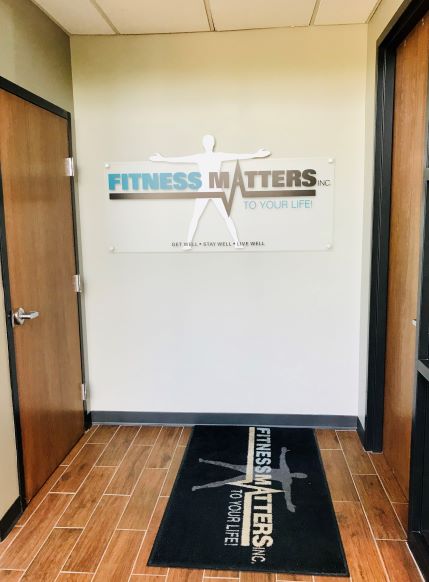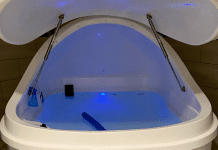Postpartum Pelvic Health
We’re all moms here right? I mean…maybe there are a few observers, but I’m going to assume that the vast majority of readers of this blog are moms or people who have a vested interest in moms. So now that we have that straightened out, I’m going to venture into one of those topics we don’t always talk about. Or when we do, it’s shrouded in embarrassment or behind a giggle. But I’m trusting you here. Today we’re going to talk about postpartum pelvic health.
Most likely, if you’ve physically experienced the miracle of pregnancy and childbirth your pelvic floor isn’t quite like it once was. And that might mean you live with pain or experience embarrassing symptoms.
But why are we so embarrassed? I mean, if you think about it, your pelvis has worked magic, endured physical stress and lived to (not) talk about it. Your pelvis helped bring LIFE into the world. We should be celebrating it!
You Don’t Have to Live with Incontinence
Oh, but the peeing. How many times have you been with a group of mom friends and someone peed laughing, or coughing, or sneezing? It’s pretty common. Many moms experience pain and incontinence postpartum and as Pelvic Health Physical Therapist Anna Patitucci, PT, DPT, shared with me, “think they just have to live with it.”
But, the good news is, Anna says you don’t have to live with it.

My Appointment
Did you know that Pelvic Health Physical Therapy exists? And, you can consult with Anna or one of her peers at Fitness Matters right here in Columbus to find a treatment plan that works for you.

When I got the opportunity to participate in a free consultation in exchange for sharing my experience with Columbus Moms Blog readers, I was a little nervous, but being three months postpartum after having my third child I decided to go for it.
And so, I timidly called for my appointment. One thing to keep in mind is that Anna and her counterparts are in demand, so especially if your own schedule is busy, you may need to be flexible or schedule a few weeks out. Don’t let that deter you. Just don’t wait to schedule!
Ahead of the appointment, I received paperwork to bring with me, along with a number of questions to answer to help my physical therapist better understand my situation. There were a lot of questions, asking about everything from pain levels to exercise habits to how your situation impacts your social life and relationship. Be as honest as possible in filling out the forms and answering these questions because your physical therapist will use the information to help provide the best possible care.
When I arrived for my actual consultation, my nervousness quickly evaporated. I don’t know exactly what I expected, but it wasn’t what I found. I felt at ease talking to Anna, who is also a mom, and could instantly tell that she is passionate about helping and educating her patients and women in general.
She reviewed my paperwork and asked a lot of questions, but was very conversational and quick to explain things. Then it was on to a more physical exam involving simple stretches, movements, and breathing. All the while, Anna prioritized my comfort level, both physical and mental.
Anna explained that the pelvic floor, abdomen, and diaphragm work together like a piston. Your pelvic floor is a postural muscle. This means that part of its job is to support you as you stand and move. Breathing as you move is an easy way to support improved function. A weak pelvic floor can impact so much more than we realize, but simple intentional breathing exercises can make a huge difference.
3 Pelvic Floor Exercises to Start at Home
I left with homework: simple breathing and muscle exercises that Anna explained in person and sent to me on an app. Every situation is different, but your physical therapist will help get you started with the routine. Pelvic Health Physical Therapist Anna Patitucci, PT, DPT stated that anyone can start doing to improve their pelvic floor health. {This is not medical advice, always consult a health care provider for your individual needs.}
- Simply take a breath in and out. Let the air move by itself, easily, without forcing it; and observe it moving in and out. Try this for several breaths or longer. Just notice the breath moving, and soften wherever you notice the tension. Comfortable, fluid breathing can support the pelvic floor and core function. Plus, paying attention to your breathing can help calm your nervous system. This simple thing seems so small, but it’s so big.
- Connect with your pelvic floor. In any position (try sitting or lying down) notice your pelvic floor muscles. These are the muscles that stop the flow of urine and hold back gas. They run from tailbone in back to the pubic bone in front. Can you sense them? Are you able to feel them gently contract or relax? (Note: Do not routinely try to activate these muscles while urinating. And consult your physician or therapist if you have pain or discomfort). It’s common to have difficulty “sensing” these muscles. This may help: Inhale and feel your pelvic floor muscles lengthen, then as you exhale, imagine you are drawing a small bean up into your vagina and/or anus toward your heart. Start in small amounts. (Never use a real bean and don’t try to lift more than 1-2cm without direction from your doctor or therapist to do so.) This should feel gentle and easy. Do not hold your breath. If you feel pain or discomfort, stop the exercise.
- Breathe into movement. It’s common to hold our breath with moments of exertion. As moms, we hoist little people into chairs, swing infant seats into cars, and pick things up off of the floor. The next time you do one of those tasks, or even as you get out of a chair today, notice if you hold your breath. If you notice a momentary breath hold, try instead to breathe through these movements. This will help to decrease the pressure in your abdominal cavity and support the function of your core – including the pelvic floor and abdominals.
For more information about pelvic health physical therapy (or to schedule a consultation of your own) visit their website at Fitness Matters.
















